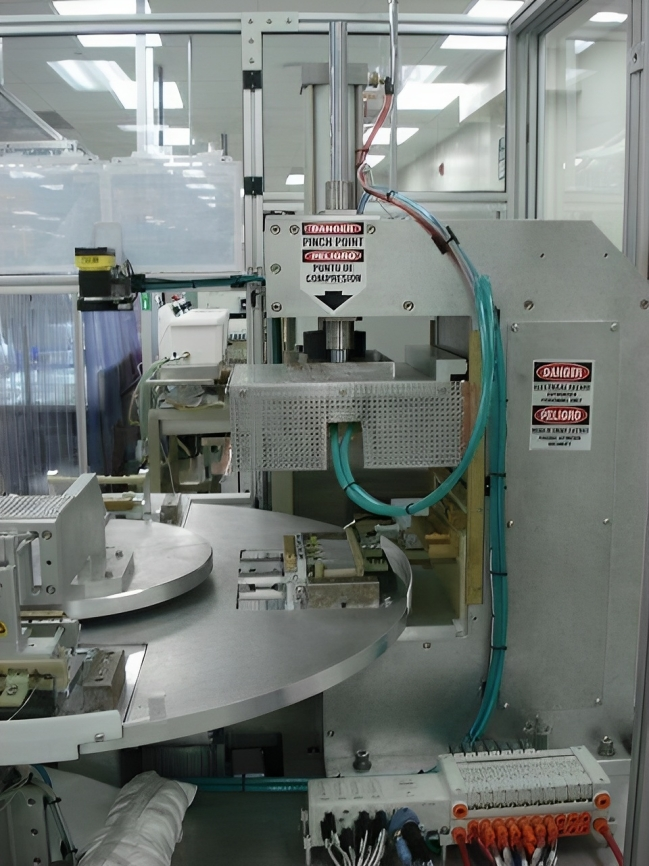
RF (Radio Frequency) welding, also known as high-frequency welding, is a process that has revolutionized various industries, from automotive to medical. This technique uses electromagnetic energy to fuse materials together, creating strong, uniform seals crucial in many applications.
However, the success of RF welding largely hinges on the choice of material. In this blog post, we'll delve into how to select the right material for your RF welding needs.
Understanding RF Welding
Before we jump into material selection, it's essential to grasp the basics of RF welding. This process involves the application of high-frequency electromagnetic energy (typically between 13-100 MHz) to materials that are typically thermoplastic. This energy's molecular friction causes the materials to heat up and fuse, creating a seam often stronger than the original material.
Factors to Consider
When choosing materials for RF welding, several factors come into play:
Material Composition: According to OnexRF, the most critical factor is the material's ability to respond to RF energy. Materials like PVC (polyvinyl chloride) and PU (polyurethane) are naturally receptive to RF energy, making them ideal for this process. Materials that don't naturally respond can sometimes be treated or coated to become RF weldable.
Thickness and Rigidity: The material's thickness impacts how it responds to the RF energy. Thicker materials require more energy to weld, which can be a limitation, depending on your equipment. Additionally, the material's rigidity or flexibility can affect the weld's quality.
Application Requirements: Consider the intended use of the welded product. Does it need to be waterproof? Does it require flexibility or rigidity? The end-user will significantly influence your material choice.
Cost and Availability: Some materials are more readily available and cost-effective. Balancing cost with the requirements of your application is crucial.
Safety and Compliance: When exposed to RF energy, certain materials emit harmful fumes. Always ensure that the materials you choose comply with health and safety standards relevant to your industry.
Popular Materials for RF Welding
Now, let's explore some commonly used materials in RF welding:
PVC (Polyvinyl Chloride): PVC is the most popular material for RF welding due to its excellent responsiveness to RF energy. It's versatile, durable, and widely used in products like inflatable structures, tarpaulins, and medical bags.
PU (Polyurethane): PU is another excellent choice for RF welding, known for its flexibility and strength. It's often used in the medical industry for blood and IV bags.
EVA (Ethylene-Vinyl Acetate): While not as commonly used as PVC or PU, EVA has its niche in the RF welding world. It's particularly valued for its low-temperature flexibility and is often used in packaging.
TPU (Thermoplastic Polyurethane): TPU is a versatile material that bridges the gap between rubbers and plastics. Its excellent abrasion resistance makes it ideal for products like life rafts and inflatable boats.
Tips for Selecting the Right Material
-
Understand the End-Use: Always start with the end in mind. The application will dictate your material properties, such as flexibility, strength, and environmental resistance.
-
Consult with Suppliers: Material suppliers can provide valuable insights into which materials work best for specific applications. They may also offer samples for testing.
-
Test and Evaluate: Before committing to a large batch, test the material with your RF welding equipment. This step helps ensure compatibility and quality of the final weld.
-
Consider Environmental Impact: With increasing focus on sustainability, consider the environmental impact of your chosen materials. Look for recyclable or eco-friendly options where possible.
-
Stay Informed on Regulations: Stay abreast of any health and safety regulations changes that may affect your choice of materials.
Conclusion
Choosing the right material for RF welding is a critical decision that impacts the final product's quality, durability, and safety. It's important to understand the properties of different materials and how they interact with RF energy, you can make informed decisions that meet the needs of your specific application.
Remember, the key is to balance material properties, application requirements, cost, and safety to find the best solution for your RF welding needs.
Whether you're working on automotive parts, medical devices, or consumer products, the right material choice can make all the difference in the success of your RF welding project. Keep exploring, testing, and consulting with experts to stay at the forefront of this dynamic field.
* This is a contributed article and this content does not necessarily represent the views of sciencetimes.com














